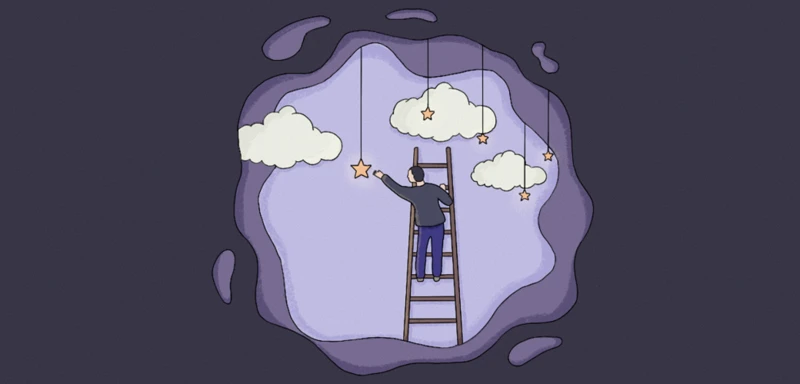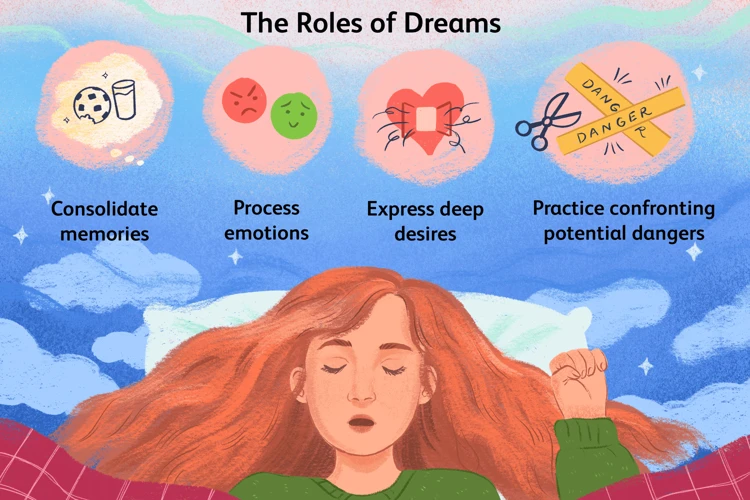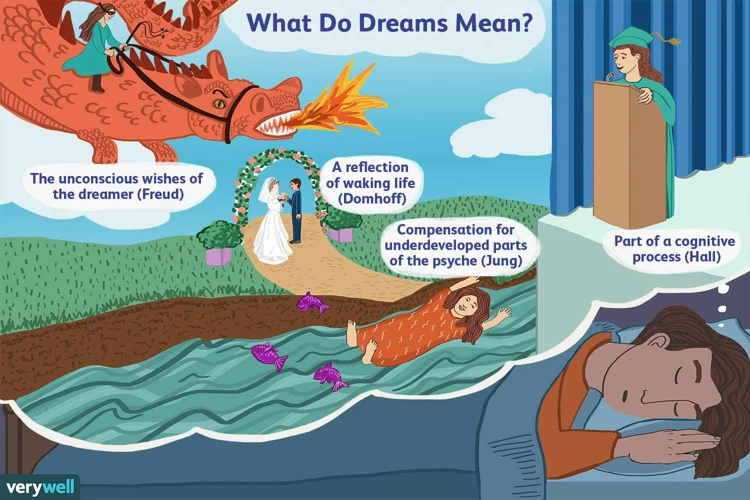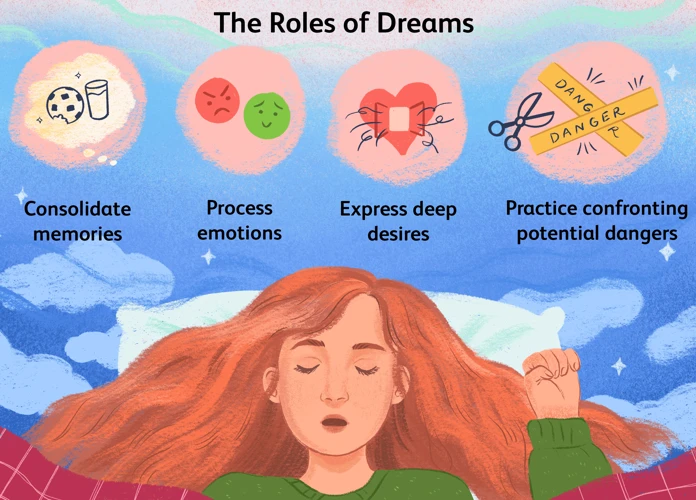Dreams are mysterious and captivating experiences that have fascinated humans for centuries. They have been a subject of fascination for poets, artists, and philosophers alike. But beyond their enchanting nature, dreams also play a crucial role in our daily lives, particularly in stress management. The connection between dreams and stress management may seem perplexing at first, but understanding this relationship can provide valuable insights into how we can effectively cope with stress. In this article, we will delve into the science behind dreams, explore their psychological functions, and examine their potential as a powerful tool for managing stress. Additionally, we will provide practical tips on how to utilize dreams for stress management and explore dream interventions and therapies that can aid in reducing stress levels. So, sit back, relax, and prepare to unlock the secrets of dreams as a stress management tool.
Understanding Stress

Stress is an unavoidable part of life, and understanding it is essential for effective stress management. It is a natural response that our body initiates when we perceive a threat or challenge. Stress triggers a cascade of physiological and psychological reactions, preparing us to face the perceived danger. While short-term stress can be beneficial, chronic stress can have detrimental effects on our overall well-being. It can lead to physical health issues such as high blood pressure, weakened immune system, and cardiovascular problems. It can also take a toll on our mental and emotional health, causing anxiety, depression, and insomnia. Recognizing the signs and symptoms of stress is crucial in managing it effectively. These may include irritability, fatigue, difficulty concentrating, and changes in appetite or sleep patterns. By understanding the impact of stress on our mind and body, we can take proactive steps to prioritize our well-being and seek appropriate stress management techniques, one of which involves the role of dreams.
The Science Behind Dreams

Dreams have long fascinated scientists and psychologists, and research has shed light on the science behind these enigmatic experiences. During sleep, the brain goes through different stages, with one of the most prominent being REM (Rapid Eye Movement) sleep. This stage is when dreams predominantly occur. During REM sleep, the brain becomes highly active, similar to waking states. The activation of various brain regions, such as the amygdala involved in emotions and the hippocampus associated with memory, contributes to the rich and vivid dreams we experience. Dreams serve multiple psychological functions, including emotional release and processing, problem-solving and decision-making, and enhancing creativity and insight. Through dreams, the mind processes and assimilates daily experiences, memories, and emotions, helping us make sense of our lives. Additionally, dreams have a potential impact on our physical health, with studies linking good sleep quality and dream recall to improved overall well-being. Understanding the science behind dreams provides us with invaluable insights into how they can contribute to stress management and overall holistic health.
REM Sleep and Dreams
REM (Rapid Eye Movement) sleep is a crucial stage of our sleep cycle and plays a significant role in dreaming. During REM sleep, our brain becomes highly active, and vivid dreams occur. This stage typically happens around 90 minutes after falling asleep and repeats multiple times throughout the night. The characteristics of REM sleep include rapid eye movement, increased brain activity, muscle paralysis, and irregular breathing. It is during this phase that dreams occur most frequently.
Dreams experienced during REM sleep can vary widely in content and intensity. They can be vivid, emotional, and often challenging to remember upon waking. The brain during REM sleep processes information, emotions, memories, and experiences, which can lead to the formation of creative and imaginative dream scenarios. Some research suggests that REM sleep and dreams are vital for memory consolidation, learning, and emotional regulation.
It is worth noting that the quality of sleep is essential for optimal REM sleep and dream experiences. Disruptions in sleep patterns can interfere with the regular occurrence of REM sleep, leading to a potential decrease in dream production. This highlights the importance of maintaining good sleep hygiene and ensuring sufficient hours of sleep each night. By prioritizing sleep and implementing healthy sleep practices, individuals can enhance their REM sleep and subsequently experience a richer dream life.
Understanding the relationship between REM sleep and dreams is crucial when exploring the role of dreams in stress management. Dreams provide an opportunity for our subconscious mind to process emotions, fears, and anxieties that may contribute to stress. By paying attention to and analyzing our dreams, we can gain valuable insights into our psychological well-being and potentially uncover underlying factors contributing to stress. This information can then be used to develop effective stress management strategies and promote overall well-being.
In the next section, we will delve further into the psychological functions of dreams and their connection to stress management.
Psychological Functions of Dreams
Dreams serve various psychological functions that contribute to our overall well-being. While the exact purpose of dreams is still a topic of debate among researchers, there are several widely recognized functions they fulfill.
1. Processing Emotions: Dreams provide a platform for processing and expressing emotions that we may have difficulty dealing with in our waking life. During REM sleep, which is when most dreaming occurs, our brain consolidates emotional experiences and helps regulate our emotional state. This can lead to emotional release, relieving the accumulated stress and tension.
2. Problem-solving: Dreams have the capability to enhance problem-solving abilities by incorporating the information and experiences we have encountered. They can present different scenarios and offer new perspectives and insights into issues, allowing us to explore potential solutions that we may not have considered consciously.
3. Enhancing Creativity: Dreams have long been associated with enhancing creativity. They can inspire innovative ideas, artistic creations, and novel approaches by connecting seemingly unrelated concepts and images. Many renowned artists, writers, and inventors have drawn inspiration from their dreams, leading to significant breakthroughs in their respective fields.
4. Gaining Insight: Dreams can provide valuable insights into our subconscious mind. They may offer symbolic representations of our deepest desires, fears, and unresolved conflicts. By analyzing and interpreting these symbols, we can gain a deeper understanding of ourselves and our internal dynamics, leading to personal growth and self-discovery.
Understanding the psychological functions of dreams allows us to appreciate their significance in managing stress and promoting overall well-being. By recognizing the role dreams play in emotional processing, problem-solving, creativity, and gaining insight, we can harness their potential for personal growth and stress reduction. To learn more about how dreams intersect with physical health, you may refer to the article “The Link Between Dreams and Physical Health“.
Dreams as a Stress Management Tool

Dreams have long been recognized as a powerful tool for stress management. They offer a unique avenue for emotional release and processing, allowing us to explore and confront our deepest fears and anxieties in a safe and controlled environment. During REM sleep, our brain activity increases, and dreams become more vivid and emotionally charged. This heightened state of consciousness enables us to work through unresolved emotions and experiences, promoting catharsis and psychological healing. Dreams can serve as a problem-solving and decision-making mechanism, as our subconscious mind continues to work on challenges even while we sleep. They can offer insights and solutions that may elude us in our waking state, providing a fresh perspective and clarity. Additionally, dreams have the potential to enhance creativity and insight, as they tap into the vast realm of imagination and symbolism. By harnessing the power of dreams and integrating them into our stress management practices, we can unlock a wealth of inner wisdom and promote overall well-being. To fully leverage the stress-reducing benefits of dreams, it’s crucial to prioritize quality sleep, as the link between dreams and sleep quality is undeniable. Ensuring a restful sleep environment and adopting healthy sleep habits can pave the way for harnessing the healing potential of dreams for stress recovery.
Emotional Release and Processing
Dreams serve as a powerful tool for emotional release and processing. When we experience stress, our emotions can build up, leading to internal tension and unease. Dreams provide a safe space for these emotions to be expressed and processed. During REM (Rapid Eye Movement) sleep, which is the stage of sleep when dreaming occurs, the brain processes and integrates emotions experienced throughout the day. Dreams provide an outlet for pent-up emotions, allowing us to release bottled-up feelings that may have been causing stress and anxiety. They provide a space where we can experience and explore a wide range of emotions, including fear, anger, sadness, and joy, in a symbolic and metaphorical manner. This emotional release can be cathartic, providing a sense of relief and helping to alleviate stress. Through dreams, we can tap into our unconscious mind and gain insight into our emotional state, allowing us to acknowledge and address emotional issues that may be contributing to stress in our waking life. So, the next time you wake up from a dream feeling emotionally charged, take a moment to reflect on the emotions you experienced and consider how they may relate to your current stressors and challenges. Understanding the emotional release and processing aspect of dreams can be a valuable tool in managing stress and promoting emotional well-being. To further explore the connection between dreams and sleep quality, check out this link.
Problem-solving and Decision-making
Dreams have a remarkable ability to assist in problem-solving and decision-making processes. During sleep, our brain continues to work on unresolved issues and attempts to find solutions. Dreams provide a playground for our subconscious mind to explore different possibilities and perspectives. In the dream state, we can encounter symbolic representations of the challenges we face in our waking life. These symbols and metaphors can offer valuable insights and alternative approaches to solving problems. As we delve into the dream realm, we may gain new perspectives, uncover hidden information, or tap into our intuition and inner wisdom. Dreams can provide a fresh perspective on complex situations, helping us see beyond the limitations of our conscious thinking. Researchers have found that dreams can enhance creative problem-solving abilities by allowing our mind to make connections and associations that may not be immediately apparent in our waking state. By paying attention to the messages and symbols present in our dreams, we can harness their problem-solving potential and apply them to real-life situations. Incorporating our dream experiences into our daily decision-making processes can lead to more informed and insightful choices. Dreams can be a powerful tool in navigating through the challenges that life presents and finding effective solutions. For individuals dealing with recovery or healing from trauma or difficult life experiences, dreams can offer a profound therapeutic potential.
Enhancing Creativity and Insight
Dreams have a remarkable ability to enhance creativity and provide valuable insights into various aspects of our lives. During the dream state, our minds are free from the constraints and limitations of the waking world, allowing for unbridled imagination and unconventional connections. This can lead to innovative and out-of-the-box thinking, which is essential for creativity. Many well-known artists, writers, and inventors have credited their dreams as a source of inspiration for their greatest works. For example, the renowned scientist, Friedrich August Kekulé, discovered the structure of the benzene molecule through a dream where he saw a serpent biting its own tail, representing the cyclic nature of the molecule. Dreams can also offer unique perspectives and insights into personal challenges or dilemmas that we may be facing. They can provide symbolic representations that bring forth hidden emotions, desires, and conflicts, shedding light on complex situations. Engaging with these dream symbols and exploring their meanings can offer a deeper understanding of ourselves and our experiences. By embracing and harnessing the creative and insightful potential of dreams, we can uncover new solutions, perspectives, and perspectives in our waking lives. To learn more about the healing potential of dreams and their role in personal growth and recovery, refer to the article on the healing potential of dreams.
Practical Tips for Utilizing Dreams for Stress Management

When it comes to utilizing dreams for stress management, there are practical tips that can help harness the power of our dreams effectively. One helpful practice is keeping a dream journal, where you can record your dreams upon waking up. This can improve dream recall and allow you to identify recurring themes or patterns that may be related to your stress. Additionally, interpreting and reflecting on your dreams can provide valuable insights into your subconscious thoughts and emotions. Engage in self-reflection and consider the symbols, emotions, and events within your dreams to gain a deeper understanding of any underlying stressors. Another way to incorporate dreams into stress management is by taking dream-inspired actions. If you receive guidance or solutions through your dreams, consider implementing them in your waking life. This can help alleviate stress by addressing issues directly. By incorporating these practical tips into your routine, you can tap into the potential of your dreams as a unique and powerful tool for stress management.
Keeping a Dream Journal
Keeping a dream journal can be a powerful tool for utilizing dreams in stress management. By recording your dreams regularly, you create a space for introspection and self-reflection. Here are some steps to start and maintain a dream journal:
- Keep a pen and journal by your bed: Place a journal and pen next to your bed so that they are easily accessible when you wake up from a dream. This will help you capture the details of your dream before they fade away.
- Record your dreams immediately upon waking: As soon as you wake up, take a few minutes to jot down any fragments, images, emotions, or themes from your dream. It is important to write down your dreams as soon as possible because memories of dreams can quickly diminish throughout the day.
- Include specific details: Be as detailed as possible when describing your dreams. Note the people, places, objects, and any significant events or feelings that occurred during the dream. Pay attention to colors, sounds, and even smells if they were present.
- Document your emotions: Record how you felt during the dream and upon waking up. Emotions can provide valuable insights into the underlying stressors or anxieties that your dream may be reflecting.
- Review and analyze your dream journal: Periodically review your dream journal to look for patterns, recurring symbols, or themes. Reflect on any connections between your dreams and your stress levels or daily experiences. This can provide deeper understanding and guidance for stress management.
By keeping a dream journal, you create a personal treasure trove of insights into your subconscious mind. It allows you to explore the hidden aspects of your psyche and gain a better understanding of your emotions and stress triggers.
Interpreting and Reflecting on Dreams
Interpreting and reflecting on dreams can provide valuable insights into our subconscious thoughts and emotions, ultimately aiding in stress management. When we remember our dreams, it opens up an opportunity for self-reflection and exploration. One way to interpret dreams is by examining the symbols and themes present. Certain objects or scenarios in our dreams may have personal significance and can be linked to specific emotions or experiences. Keeping a dream journal can be helpful in capturing the details of dreams upon waking up and revisiting them later for analysis. Reflecting on dreams can involve asking questions such as, “What emotions did I experience during the dream?” or “What do these symbols represent to me?” This process can bring awareness to suppressed emotions or unresolved issues that may be contributing to stress in our waking life. It is important to approach dream interpretation with an open mind, allowing for personal associations and symbolism to guide the process. Seeking guidance from a therapist or dream expert can also provide additional support and insights. By interpreting and reflecting on our dreams, we gain a deeper understanding of ourselves and can harness this knowledge to better manage stress in our daily lives.
Incorporating Dream-inspired Actions
Incorporating dream-inspired actions into our waking lives can be a powerful strategy for managing stress. Dreams often provide insights, solutions, and creative ideas that can help us navigate through challenging situations. When we wake up from a particularly vivid or impactful dream, it is beneficial to take a few moments to reflect on the dream’s themes and symbols. Consider the emotions, scenarios, or messages conveyed in the dream. Is there a particular action or behavior that stands out? This can be a cue to incorporate a similar action or behavior into our daily lives. For example, if you dreamt of being in nature and feeling a sense of calm and relaxation, you can make it a point to spend more time in nature or practice relaxation techniques regularly. Dreams may also present us with new perspectives or alternative ways of approaching a problem. By incorporating these insights into our waking lives, we can gain fresh perspectives and potentially find innovative solutions. Remember to approach dream-inspired actions with an open and curious mindset, allowing your intuition to guide you in implementing them in ways that resonate with your goals and values. While not every dream may have a clear action to take, staying open to the possibility of dream-inspired actions can be a valuable tool in stress management.
Dream Interventions and Therapies for Stress Reduction

Dream interventions and therapies can be powerful tools for reducing stress levels and promoting overall well-being. These techniques utilize the insights and symbolism found within our dreams to help us gain a deeper understanding of our stressors and develop strategies for managing them. Here are some common dream interventions and therapies that can aid in stress reduction:
1. Dream Analysis: This technique involves working with a therapist or trained professional to explore the meaning and symbolism behind your dreams. By discussing the content of your dreams, the therapist can help you uncover hidden emotions, fears, or unresolved issues that may be contributing to your stress levels. Through this process, you can gain valuable insights and develop coping strategies to address and manage your stress effectively.
2. Imagery Rehearsal Therapy: This therapy is particularly helpful for individuals who experience recurring nightmares that contribute to their stress levels. With the guidance of a therapist, you can learn to rewrite the script of your nightmares by visualizing and rehearsing more positive outcomes or resolutions. This technique can help to alleviate the fear and anxiety associated with these dreams, resulting in reduced stress and improved sleep.
3. Lucid Dreaming: Lucid dreaming is a state where you become aware that you are dreaming while still in the dream itself. This technique allows you to actively engage with your dreams and even have some control over the dream narrative. By practicing lucid dreaming, you can transform stressful or negative dream scenarios into more positive and empowering experiences, reducing the overall impact of stress on your well-being.
4. Mindfulness-based Dream Therapy: This approach combines the principles of mindfulness with dream analysis. It involves cultivating a state of awareness and presence while exploring the content of your dreams. By integrating mindfulness techniques into dream work, you can develop a deeper connection with your dreams, become more attuned to your emotions, and gain insight into the underlying stressors that may be impacting your life. Mindfulness-based dream therapy can help you develop acceptance, resilience, and effective stress management strategies.
It’s important to note that engaging in dream interventions and therapies should be done under the guidance of a qualified professional. They can provide expert support and ensure that the techniques are tailored to your individual needs and goals. By incorporating these approaches into your stress management routine, you can harness the power of your dreams to reduce stress and promote overall well-being.
The Importance of Sleep and Stress Management
Quality sleep and effective stress management go hand in hand and are crucial for our overall well-being. Adequate sleep provides our body and mind with the necessary rest and rejuvenation to function optimally. During sleep, the body repairs itself, consolidates memories, and regulates various physiological processes. It is during sleep that we also experience dreams, which can have a significant impact on our stress levels. When we experience restful sleep, it helps reduce the production of stress hormones and promotes a sense of calmness and relaxation. On the other hand, when we are sleep-deprived, it can lead to increased stress levels, decreased cognitive function, and impaired emotional regulation. Incorporating healthy sleep habits, such as maintaining a consistent sleep schedule, creating a conducive sleep environment, and practicing relaxation techniques before bed, can greatly contribute to effective stress management. Taking the time to prioritize both sleep and stress management is essential for maintaining our overall health and well-being. By nurturing a healthy sleep routine and implementing stress reduction strategies, we can enhance our ability to cope with stress and lead a more balanced and fulfilling life.
Conclusion
In conclusion, dreams have a significant role in stress management. They provide us with a window into our subconscious mind, allowing us to process emotions, solve problems, and gain insights. Through emotional release and processing, dreams offer a cathartic outlet for stress and anxiety. They can also aid in problem-solving and decision-making by presenting alternative perspectives and ideas. Additionally, dreams enhance creativity and insight, unlocking hidden potential and innovative solutions. By keeping a dream journal, interpreting and reflecting on dreams, and incorporating dream-inspired actions, we can harness the power of our dreams for stress reduction. Moreover, various dream interventions and therapies, such as dream analysis and lucid dreaming, can provide further support in managing and reducing stress levels. Remember, sleep and stress management go hand in hand, and by recognizing the importance of both, we can lead healthier and more balanced lives. So, embrace the mysteries of your dreams, and unlock their potential for stress relief and overall well-being.
Frequently Asked Questions
What is the connection between stress and dreams?
There is a deep and intricate connection between stress and dreams. Dreams provide a unique window into our subconscious mind, allowing us to process and express our emotions and experiences. Dreams can reflect the stress and anxieties we may be experiencing in our waking life.
Why do we dream more when we’re stressed?
When we are stressed, our brain and body are actively processing and trying to make sense of the situations that cause us stress. This heightened level of mental and emotional activity can lead to more vivid and frequent dreams as our subconscious mind works to process and cope with the stressors in our life.
Can dreams help alleviate stress?
Yes, dreams can play a significant role in stress management. They act as a natural outlet for emotional release, allowing us to process and release pent-up emotions. Dreams can also offer problem-solving insights and creative ideas, which can contribute to stress reduction and overall well-being.
What is the significance of keeping a dream journal?
Keeping a dream journal is a powerful tool for understanding and utilizing the insights provided by our dreams. Writing down our dreams immediately upon waking helps us retain and analyze the dream content, making it easier to identify patterns, symbols, and emotions that may be related to stressors in our life.
How can dreams assist in problem-solving and decision-making?
Dreams have the remarkable ability to tap into our subconscious mind, bringing forth thoughts, ideas, and solutions that may not be readily accessible in our waking state. By paying attention to our dreams, we can gain fresh perspectives and find innovative solutions to problems or make better-informed decisions.
What is the role of dream-inspired actions in stress management?
Dream-inspired actions involve taking concrete steps based on the insights and messages received from dreams. By incorporating dream-inspired actions into our daily lives, we can address the underlying causes of stress and work towards resolving them, leading to a more balanced and fulfilling life.
How can dreams be incorporated into stress reduction therapies?
Dream work can be incorporated into stress reduction therapies through techniques such as dream analysis, dream interpretation, and guided imagery. These techniques can help individuals gain a deeper understanding of their dreams, explore their underlying emotions, and release stress-related tensions.
How does sleep quality impact stress levels?
Sleep quality plays a crucial role in stress management. Lack of quality sleep can contribute to increased stress levels and reduce our ability to cope with stress effectively. On the other hand, prioritizing good sleep habits and ensuring sufficient rest can significantly improve our resilience to stressors.
Can dreams have physical health benefits?
Yes, dreams have been found to have potential physical health benefits. Dreams have been linked to improved cognitive function, memory consolidation, and enhanced emotional well-being. They can also contribute to the body’s healing processes, aiding in recovery from physical ailments and promoting overall wellness.
How can dreams support our overall mental and emotional well-being?
Dreams support our mental and emotional well-being by providing a safe space for emotional expression and processing. They can help us address and release unresolved emotions, fears, and anxieties, leading to a greater sense of inner peace, emotional balance, and overall well-being.








